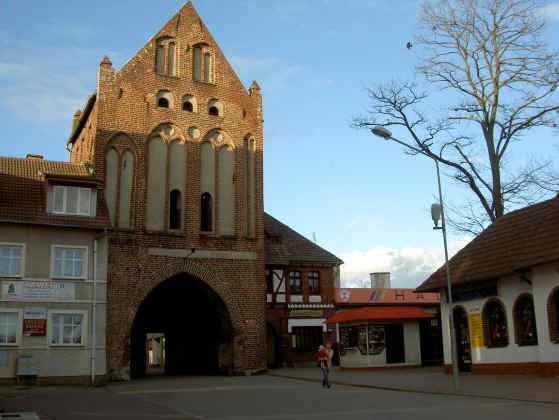Gmina Świdwin (urban gmina) Time zone CET (UTC+1) Area 22.38 km² Local time Sunday 8:31 PM | County Świdwin County Elevation 99 m (325 ft) Zip code 78-300 do 78-301 Population 15,503 (2010) | |
 | ||
Weather 11°C, Wind W at 6 km/h, 89% Humidity Points of interest Schloss Świdwin, Park Wodny Relax, Brama Kamienna | ||
Świdwin [ˈɕfidvin] (German: Schivelbein; Kashubian: Skwilbëno) is a town in West Pomeranian Voivodeship of northwestern Poland. It is the capital of Świdwin County established 1999, previously having been in Koszalin Voivodeship (1950–1998), and the administrative seat - though not part - of the Gmina Świdwin. Świdwin is situated in the historic Pomerania region on the left banks of the Rega river, about 100 km (62 mi) east of the regional capital Szczecin and 44 km (27 mi) south of the Baltic coast at Kołobrzeg. As of 2007 the town has a population of 15,486.
Contents
- Map of Swidwin Poland
- History
- Population
- Notable residents
- Twin towns sister cities
- widwins airport
- References
Map of Swidwin, Poland
History
In the 13th century the settlement belonged to the Duchy of Pomerania under the Griffin duke Barnim I. In 1248 the duke ceded the area to the Bishop of Cammin, who shortly afterwards sold it to the Ascanian margraves of Brandenburg. Schivelbein was incorporated as the northeastern outpost of the Neumark region and, though temporarily pawned to the State of the Teutonic Order, remained a Brandenburg possession until the dissolution of the Holy Roman Empire in 1806. In 1816 it became part of the Prussian province of Pomerania.
The Battle of Świdwin took place south of the town during 6–7 March 1945, in which a German SS corps was encircled and destroyed by two Soviet and one Polish armies. After the town was captured, a Soviet general was killed by a member of the Hitler Youth. The reprisals that followed saw the men shot, and the women and girls raped by Soviet troops. At the end of World War II Schivelbein with Farther Pomerania became part of the Republic of Poland and its name changed to Świbowina, which was officially renamed to Świdwin in 1946.
Population
1960: 10,000 inhabitants1970: 12,600 inhabitants1975: 13,500 inhabitants1980: 14,000 inhabitants2004: 17,000 inhabitants2005: 16,240 inhabitants2008: 15,486 inhabitants2009: 15,621 inhabitants2010: 15,503 inhabitantsNotable residents
Twin towns — sister cities
Świdwin is twinned with:
Świdwin's airport
The military airport operated by the Polish Air Force is located about 5 km (3.11 mi) from the city centre. Civilians are not permitted to enter, but this airport is often used for government's aircraft. The runway is 2.5 km (1.55 mi) length and 60 m (196.85 ft) width.
